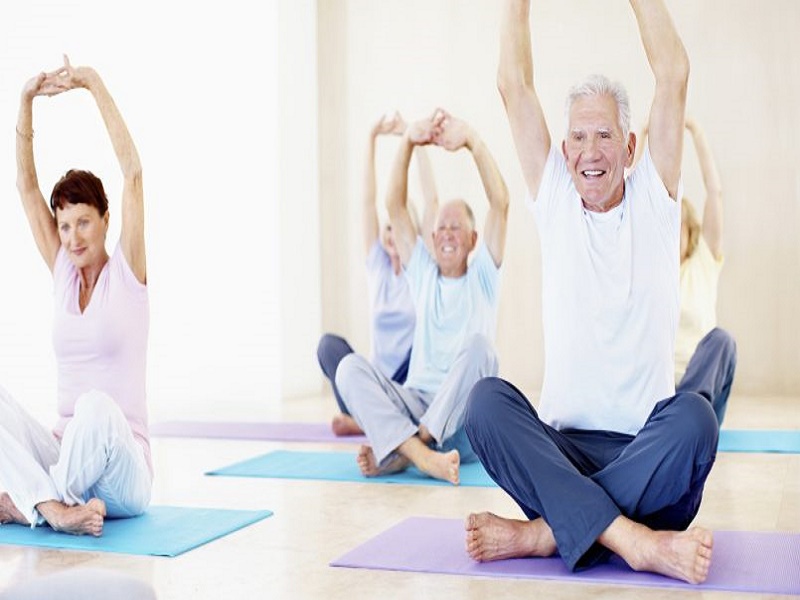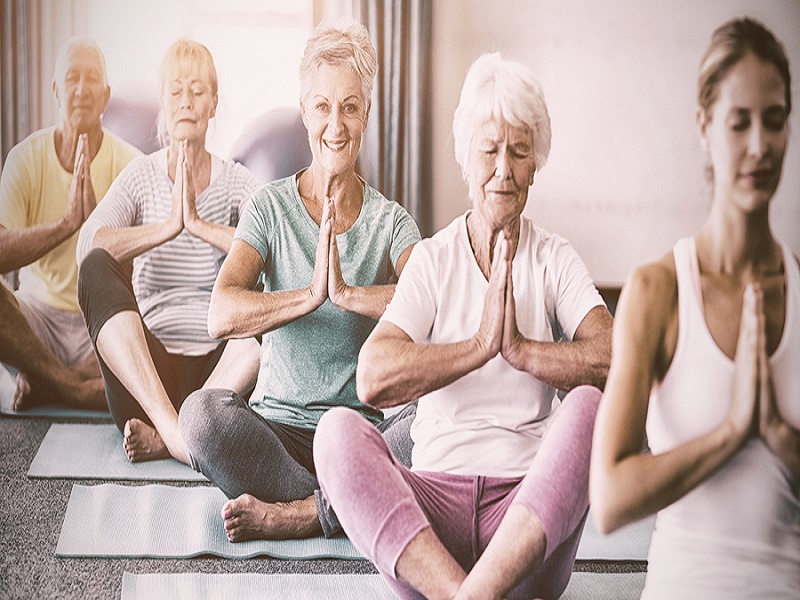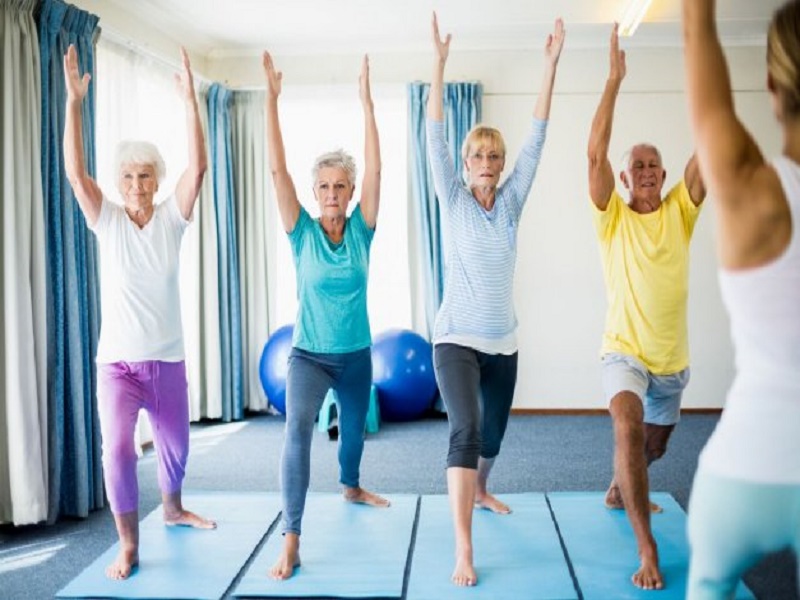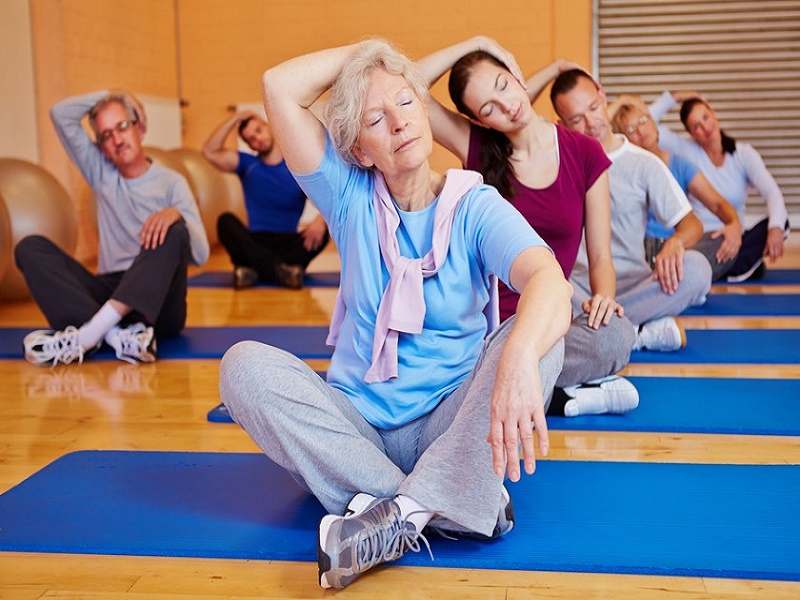
Benefits of yoga for the elderly
Yoga is a physical activity highly recommended for seniors for its benefits, both physical, psychological and social. In older people it is good to keep in mind this practice, which is never too late to start it.
The practice of yoga should be regular. Expert teachers are responsible for teaching the most appropriate yoga postures for seniors and helping to correct inappropriate movements to prevent frequent and dangerous injuries in elderly people.
If you have bone or muscle problems, it is important to first consult with a doctor so that you can indicate which positions are the most appropriate to perform the exercises.
With the regular practice of yoga can correct many of the problems associated with age such as insomnia , lack of initiative, insufficient circulation , digestive problems , stimulate muscle flexibility and correct posture helping to improve fitness. Practicing yoga also helps you get more energy and have a more positive attitude towards life.
Next we show a series of physical, psychological and social benefits that are obtained with the regular practice of yoga.
Physical benefits of yoga
The physical benefits that are obtained mainly in the practice of this discipline are:
Increased flexibility . Older people with the passage of age tend to lose mobility and flexibility. Yoga allows you to practice some simple stretching exercises that help to decrease this process.

Improved balance . For the elderly to maintain balance is very important, as they are prone to fall and suffer bone injuries. The practice of this discipline helps to improve the balance and therefore to reduce this problem.
Maintenance of muscle mass. People who stop physical activity are losing strength. Yoga helps older people maintain their muscle mass.
Improvement of breathing Yoga teaches how to breathe correctly. For seniors, knowing how to breathe properly is very important, since it helps significantly relax and relieve some respiratory diseases.
Psychological benefits of yoga
As discussed in the introduction, yoga not only improves physical aspects, but also helps to exercise the mind.
Some of the most beneficial aspects at the psychological level are:
Improvement of the memory . Regular yoga practice helps minimize the cognitive and emotional problems that often precede Alzheimer’s and other forms of dementia.
It improves the mood . D ue to increase serotonin, regular practice of yoga, produce significant improvements in patients with depression and anxiety positively influencing the mood of the practitioner.
Reduce stress The practice of yoga reduces the levels of cortisol, the hormone http://healthsavy.com/product/cialis/ responsible for regulating stressful situations. Performing this discipline helps lower the levels of this hormone, and therefore reduce stress.
Improve sleep . One of the functions of serotonin is to increase the production of melatonin, the hormone responsible for regulating sleep cycles. The practice of yoga increases serotonin levels so it helps you sleep better.
Concentration and relaxation The practice of yoga requires concentration, it is an activity in which body and mind are in harmony producing a state of intense relaxation.
Social benefits of yoga
Yoga is a discipline that can be practiced in a group. It can be used as a tool to help older people relate to people of the same age and spend time in good company.
Reduces the feeling of depression and loneliness. Depression tends to isolate us and in these cases, loneliness is a bad companion. In this sense, the practice of yoga helps to relate to other people and meet new people so it helps to combat depression and loneliness.

Improve social relationships. Yoga and meditation help to keep the mind happy and relaxed, helping us to deal sensitively with our daily relationships with family, friends or loved ones. When you are well you relate to others with greater kindness and have the ability to build more balanced and deeper relationships.
Recommendations when practicing yoga
1. Do the exercises under the supervision of a professional to avoid injuries.
2. If you have bone or muscle problems, first consult a doctor so that you can indicate which positions are best suited to practice.
3. If you have previous injuries or surgeries, it is best that you tell your teacher when you arrive at the class.
4. Let your body adapt to the new exercises, to the new movements, without forcing. You will discover muscles that you did not know existed and that you have never exercised. With practice you will be doing little by little, more and more .

5. Ask all your doubts to your teacher. It is preferable to understand something well before doing it.
6. To have the concentration necessary to be able to perform a posture correctly, it is important, as far as possible, to focus your mind and your attention on breathing.
7. Enjoy the final relaxation. Relaxation at the end of a yoga class is essential to complete the awareness of our body.
8. Doing the class in an open and open space allows you to see the sunrise, hear the sound of nature, feel it, smell it, observe it … without a doubt a unique moment.

9. Try to eat small amounts before practicing yoga. The ideal is to eat a couple of hours before doing yoga, if this is not possible it is recommended to eat at least one hour before practicing the postures.
10. The clothing to practice yoga has to be comfortable, allowing to move freely.
